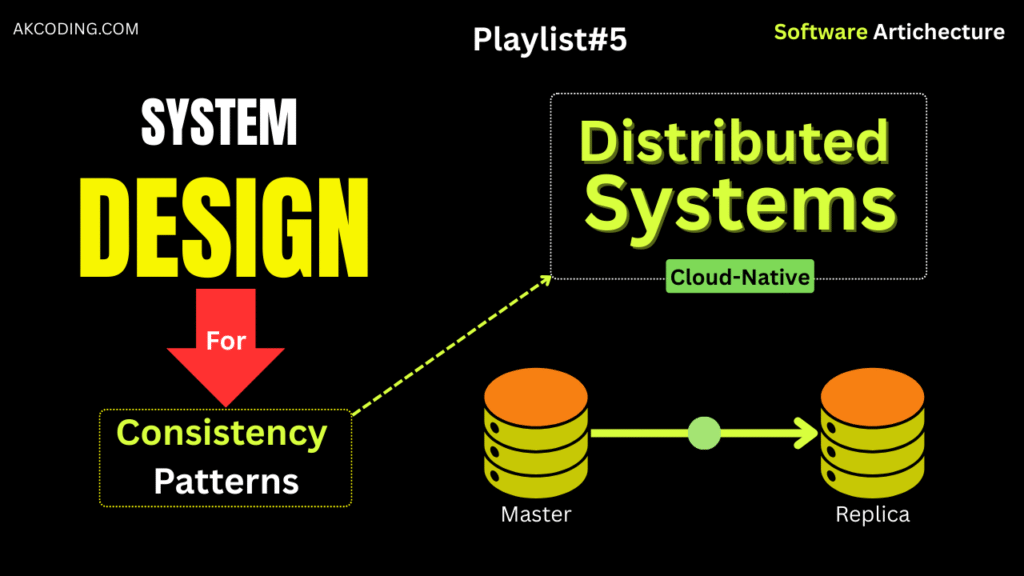
Consistency Patterns in Distributed Systems
If you’ve ever wondered why sometimes your Instagram post appears instantly on your phone but takes a few seconds to show up on your friend’s device, you’ve already experienced the challenge of consistency in distributed systems.
In today’s connected world, data is spread across multiple servers, regions, and databases. The key question is:
👉 How do we ensure users see the “right” data, at the right time, everywhere?
The answer lies in Consistency Patterns. Let’s break them down.
🔹 What is Consistency?
In distributed systems, consistency defines how up-to-date and synchronized data is across different nodes.
The stricter the consistency, the more accurate your reads are — but often at the cost of latency and availability.
That’s where different consistency patterns come into play.
🔹 1. Strong Consistency
- Guarantees that after a write, every read returns the latest value.
- No stale data, no confusion — everyone sees the same version instantly.
📌 Example: Banking systems 💰.
When you transfer money, your balance must reflect immediately everywhere.
⚖️ Trade-off: Higher latency and less availability during network partitions.

🔹 2. Eventual Consistency
- Doesn’t guarantee immediate synchronization.
- Instead, it ensures that given enough time, all replicas will converge to the latest value.
📌 Example: Social media likes ❤️.
You hit “like” on a post. Your friend might not see it right away, but eventually, the system syncs.
⚖️ Trade-off: Faster and more scalable, but may serve stale data temporarily.
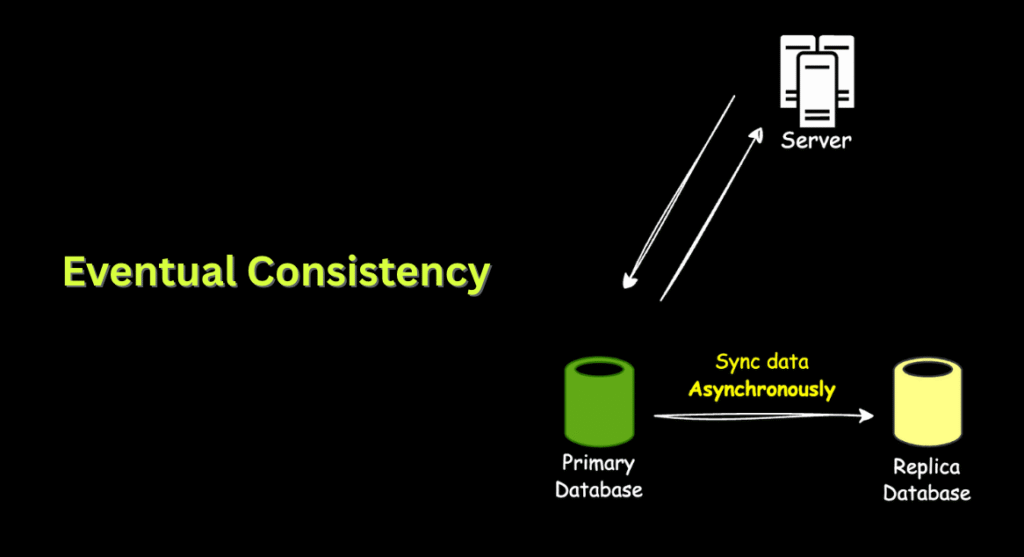
🔹 3. Weak Consistency
- Makes no guarantee that you’ll see the latest value after a write.
- Readers may always get stale or outdated values.
📌 Example: Multiplayer gaming leaderboards 🎮.
Your new score may take a long time to show up, and sometimes it might not reflect until much later.
Advantages:high availability, low latency
⚖️ Trade-off: Very fast, but unreliable for critical applications.
- potential data loss
- data inconsistency
- data conflicts
The write-behind (write-back) cache pattern is an example of weak consistency. The data will be lost if the cache crashes before propagating the data to the database. The workflow of the write-behind cache pattern is the following:
- the client executes a write operation against the cache server
- the cache writes the received data to the message queue
- the cache sends an acknowledgment signal to the client
- the event processor asynchronously writes the data to the database
The common use cases of weak consistency are the following
- Real-time multiplayer video games
- Voice over Internet Protocol (VoIP)
- Live streams
- Cache server
- Data backups
For instance, the lost video frames due to poor network connectivity are not retransmitted in a live stream.
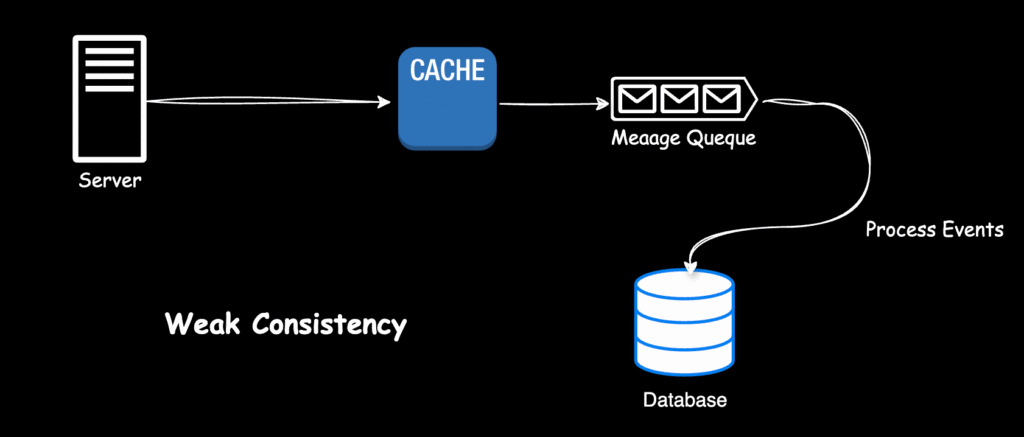
🔹 4. Causal Consistency
- Guarantees that related operations respect cause-and-effect order.
- If one write depends on another, the system preserves that relationship.
📌 Example: Messaging apps 💬.
If you send “Hi” and then “How are you?”, your friend won’t see “How are you?” before “Hi.”
⚖️ Trade-off: More complex, but ensures logical order of events.
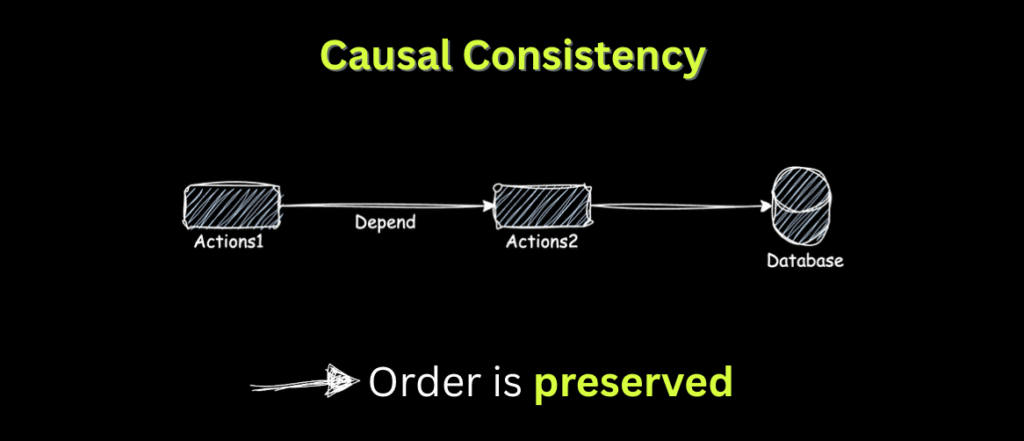
🔹 5. Read-Your-Write Consistency
- Ensures that once you write data, your own reads will always reflect that change.
- Others may still see stale values, but you won’t.
📌 Example: Profile picture updates 🖼️.
You upload a new photo, and you see it immediately — even if your friends see the old one for a while.
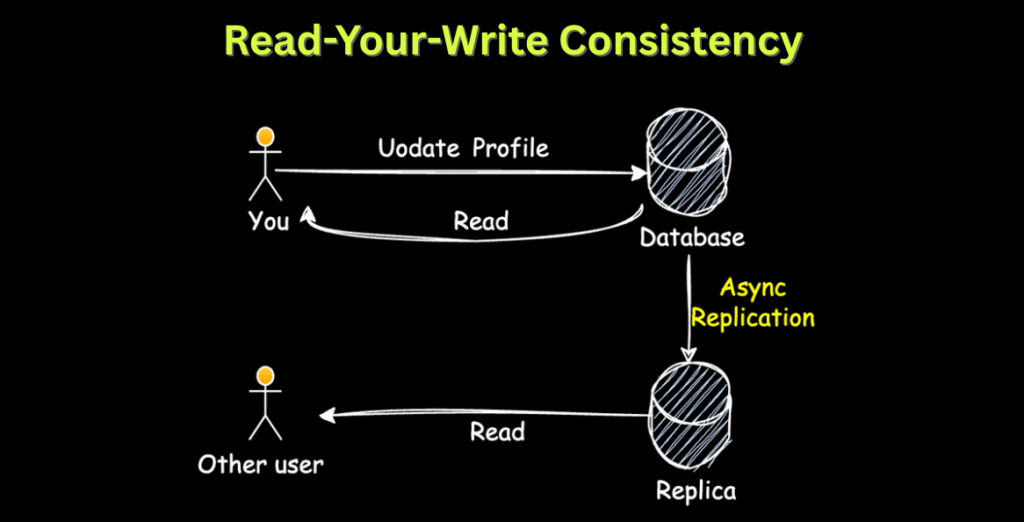
🔹 6. Monotonic Reads
- Ensures that once you’ve read the latest value, you won’t go back to seeing an older one.
📌 Example: News feeds 📰.
If you’ve seen the latest headline, the system won’t suddenly show you yesterday’s version.
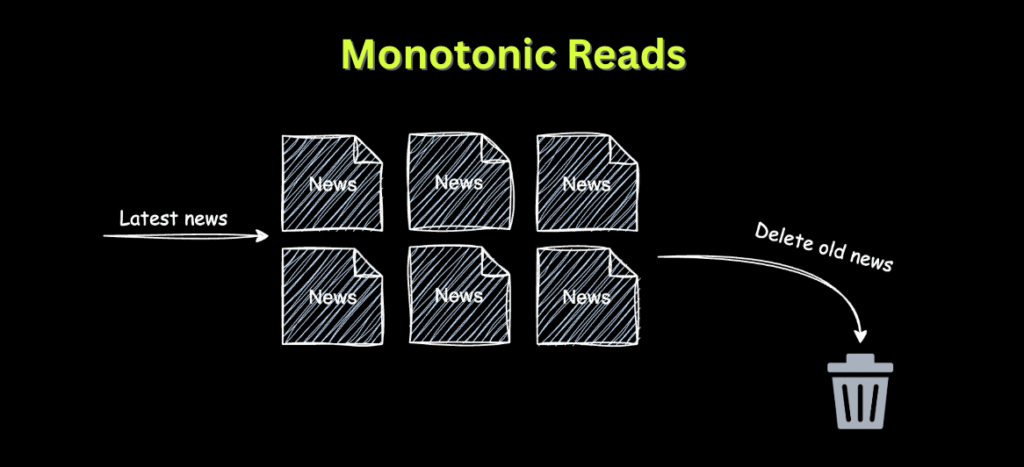
📊 Quick Comparison Table
| Pattern | Guarantee | Example Use Case |
|---|---|---|
| Strong Consistency | Always latest value | Banking balance |
| Eventual Consistency | Syncs over time | Social media likes |
| Weak Consistency | No guarantees | Gaming leaderboards |
| Causal Consistency | Preserves cause-effect order | Messaging apps |
| Read-Your-Write | Your updates are visible to you | Profile changes |
| Monotonic Reads | Never go back to old data | News feeds |
🔑 Key Takeaways
- Consistency is a spectrum, not a single choice.
- Systems trade off between accuracy, latency, and availability.
- The right consistency model depends on the business need:
- Banking apps → Strong Consistency
- Social media → Eventual Consistency
- Real-time games → Weak or Eventual Consistency
✅ Final Thoughts
Consistency patterns are at the heart of distributed system design.
They explain why different apps behave differently and why engineers must carefully choose between speed, accuracy, and user experience.
Next time you design a system — or answer a system design interview question — remember:
👉 It’s not about one being “better.” It’s about choosing the right consistency model for the right use case.
Read other awesome articles in Medium.com or in akcoding’s posts.
OR
Join us on YouTube Channel
OR Scan the QR Code to Directly open the Channel 👉

